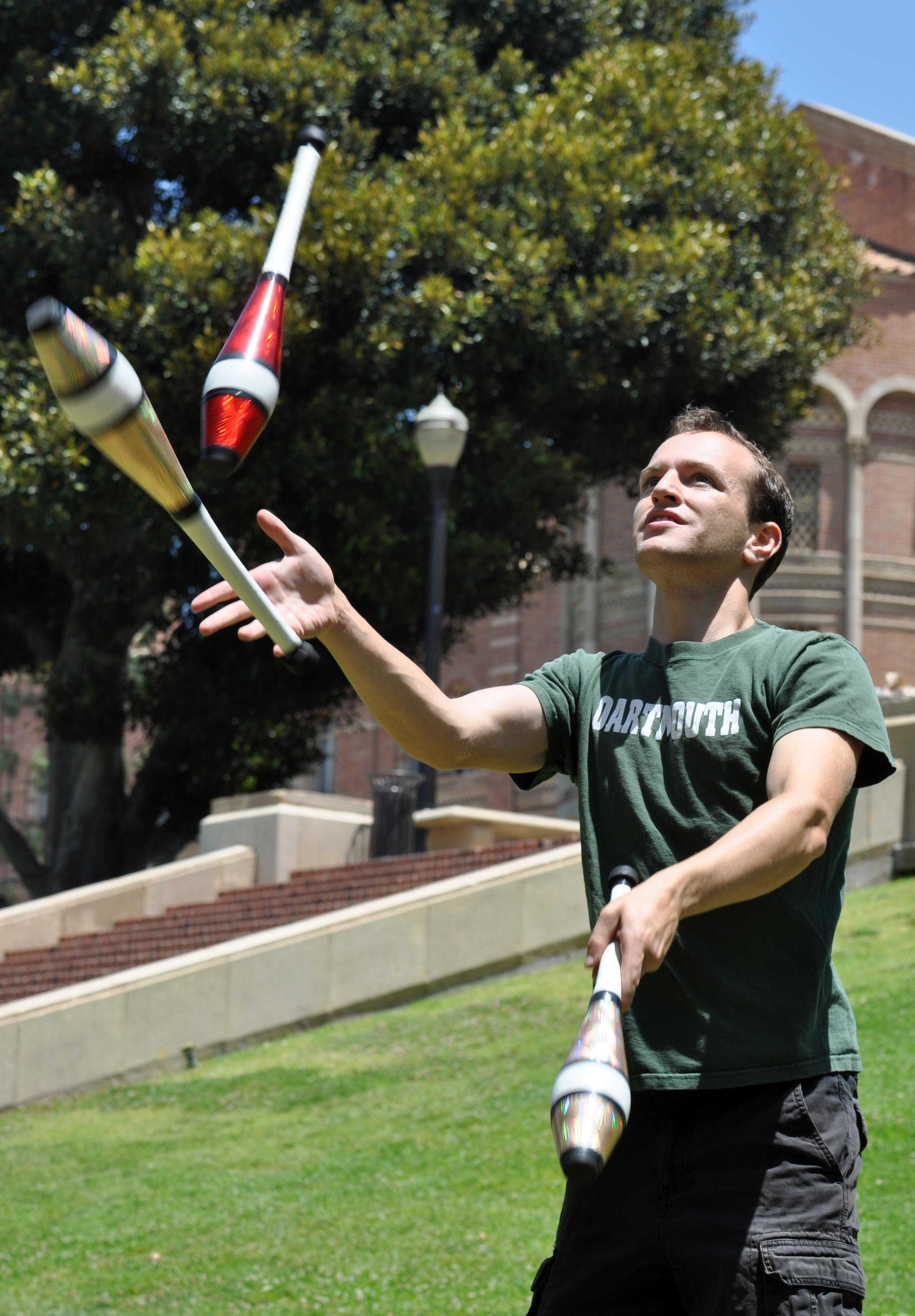At UCLA juggling club practice, students of all levels improve their skills and tricks

Linguistics graduate student Michael Lefkowitz juggles at Janss Steps.
By Elizabeth Case
June 6, 2011 2:00 a.m.
Red, purple and gold flash on the grass next to Janss Steps as three jugglers pass clubs.
To their left, a graduate student practices with four spray-painted tennis balls, and another is learning the basics with two beanbags.
It may sound like the circus has come to campus. But this is just another of the juggling club’s biweekly meetings.
Linguistics graduate student Michael Lefkowitz founded the group during winter quarter with Claude Loverdo, a post-doctoral biology student, after she saw him juggling while walking on a slack line ““ a thin line of canvas stretched between two trees.
Juggling became an official club sport this spring in order to provide liability insurance for its members.
“(But) all we really need is a patch of grass and a few jugglers,” said Lefkowitz, who first picked up juggling as a kid at a summer camp in Pennsylvania.
Regular practices provide a way for like-minded students to practice tricks with partners and learn and teach new skills. Many of the members said they joined the club because juggling is such a social activity.
“You’re playing with someone else (and) there’s a lot of improvisation,” Lefkowitz said. “If catch is fun, we’re playing catch seven times at once.”
On the grass, Alex Browne, a second-year mechanical engineering student, works with bioinformatics graduate student Darren Kessner on juggling with balls behind his back.
“I haven’t met a juggler I haven’t liked yet,” Browne said. “To really pick up juggling takes kind of a silly person, but a dedicated one.”
Browne started juggling in sixth grade. He had a gift set of Klutz balls and ““ he said with a laugh ““ a lot of free time.
He was mostly self-taught until he attended a summer camp called Camp Winnarainbow when he was 15 years old. Directed by Wavy Gravy, the iconic 1960s clown and master of ceremonies of Woodstock, the campers learn basic circus skills, including juggling and acrobatics.
Every year since, Browne has returned as a juggling instructor.
Though he has no plans to make it a career, he said he will keep juggling due to the pure enjoyment he gets out of the activity.
“I don’t know why I wouldn’t keep going,” he said.
Kessner said he specifically likes juggling because it lacks real-world application.
“You can’t really point to an evolutionary advantage to being able to juggle, but we can still learn it,” he said.
Kessner said he barely knew how to pass ““ juggle with a partner ““ before he started attending the club at the beginning of the quarter. Now he’s passing six clubs, and is working on seven with Lefkowitz.
According to the Juggling Information Service, the world record for most clubs juggled is nine. For beanbags, 12.
But the records are constantly broken.
“The sky is really the limit ““ you can never hit the top. The best jugglers, all they have to do is add another ball and that’s something they can’t do yet,” Lefkowitz said.


